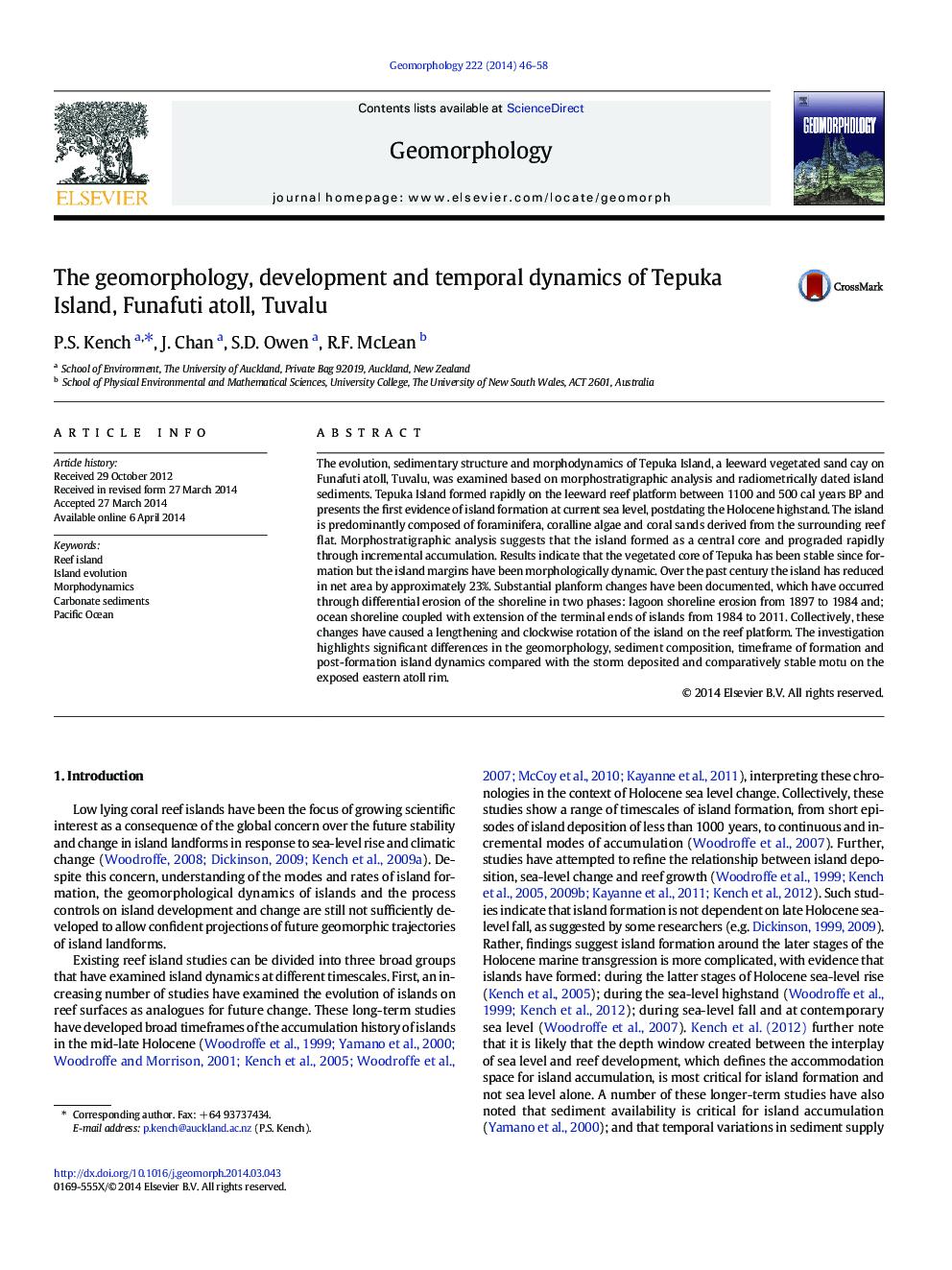| Article ID | Journal | Published Year | Pages | File Type |
|---|---|---|---|---|
| 6432409 | Geomorphology | 2014 | 13 Pages |
The evolution, sedimentary structure and morphodynamics of Tepuka Island, a leeward vegetated sand cay on Funafuti atoll, Tuvalu, was examined based on morphostratigraphic analysis and radiometrically dated island sediments. Tepuka Island formed rapidly on the leeward reef platform between 1100 and 500 cal years BP and presents the first evidence of island formation at current sea level, postdating the Holocene highstand. The island is predominantly composed of foraminifera, coralline algae and coral sands derived from the surrounding reef flat. Morphostratigraphic analysis suggests that the island formed as a central core and prograded rapidly through incremental accumulation. Results indicate that the vegetated core of Tepuka has been stable since formation but the island margins have been morphologically dynamic. Over the past century the island has reduced in net area by approximately 23%. Substantial planform changes have been documented, which have occurred through differential erosion of the shoreline in two phases: lagoon shoreline erosion from 1897 to 1984 and; ocean shoreline coupled with extension of the terminal ends of islands from 1984 to 2011. Collectively, these changes have caused a lengthening and clockwise rotation of the island on the reef platform. The investigation highlights significant differences in the geomorphology, sediment composition, timeframe of formation and post-formation island dynamics compared with the storm deposited and comparatively stable motu on the exposed eastern atoll rim.
